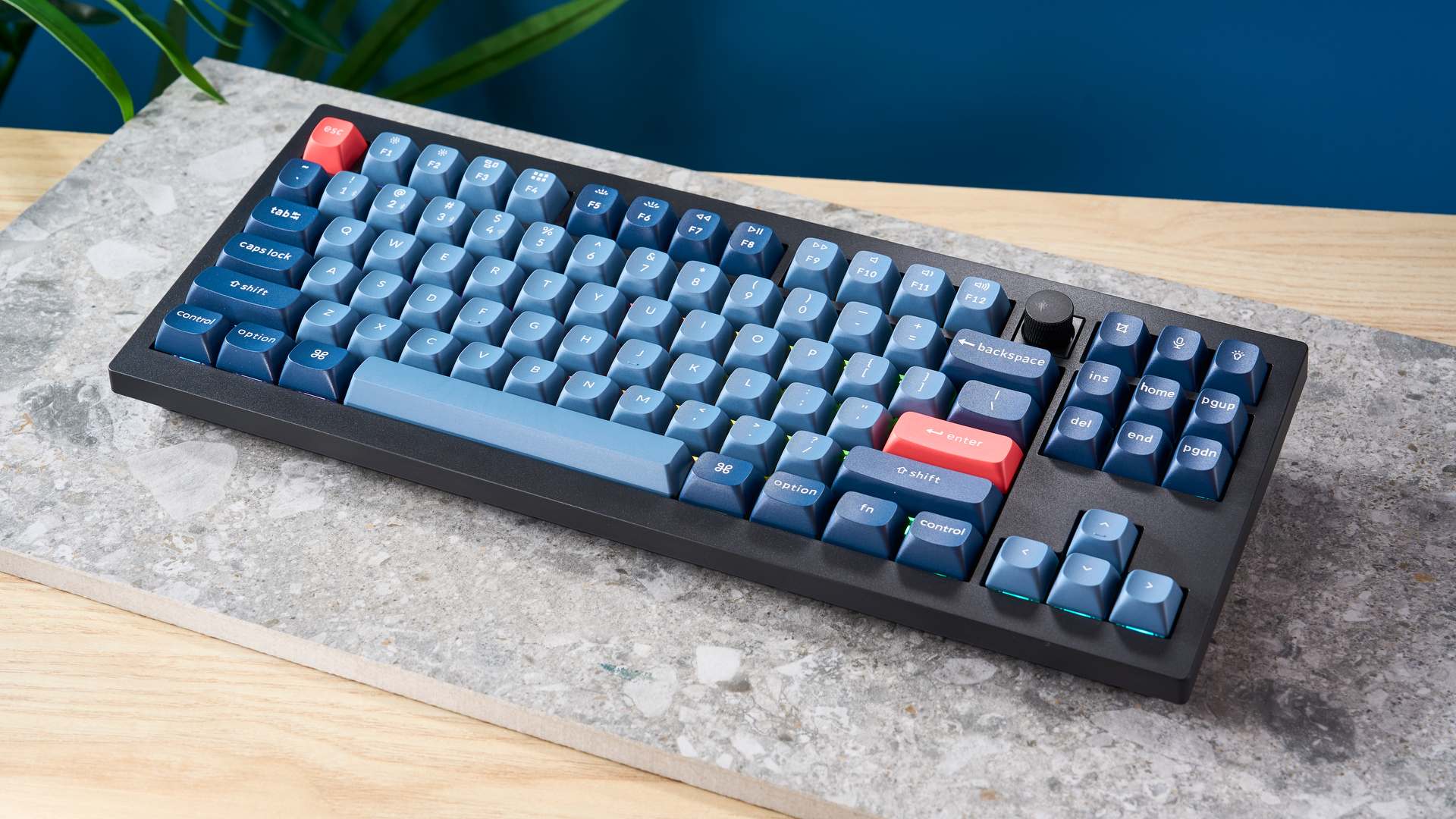
I’ll say it straight away — the Keychron V3 Max ($99), the TKL version of the 75% Keychron V1 Max ($104) and full size Keychron V6 Max ($109), is one of the best mechanical keyboards you can buy. If you’re wondering whether to give Keychron a go, or are interested in the world of custom keyboards, Keychron’s V lineup is the ideal place to start thanks to their customizability and affordability. All of the lineup’s core strengths are present in the V3 Max — namely quality, customizability and affordability — and the price differences between the various sizes means there’s very little downside to simply picking the format you like best: in my case, it has to be the TKL layout of the V3 Max.
That said, the V3 Max obviously isn’t perfect, and we were surprised to see build issues not encountered elsewhere in the range. Namely, the lack of support for the PCB in the upper extremities of the board causing noticeable PCB flex in the corners, plus a poorly placed volume knob.
In spite of those minor qualms, I can’t really dunk on this board. Nor can I face going on typing without the beautiful tapping sound of the PBT keycaps and responsive Gateron Red switches. All of the elements that set the rest of the V Max lineup apart are in equal abundance on the V3 Max. For less than $100, this is a fantastic option.
To find out more, read on for my full Keychron V3 Max review.
Keychron V3 Max review: Cheat Sheet
- What is it? A wireless all-rounder mechanical keyboard for productivity and gaming.
- Who is it for? Pretty much everyone will find something to love about it, especially typists and modders.
- What does it cost? It's affordable — you can pick it up for $104 from Keychron’s website, or $99 on Amazon.
- What do we like? The board has great customization potential and an incredible typing feel, and the sweet Keychron sound is worth every penny.
- What don’t we like? Not a whole lot, except that the PCB that is prone to some bending and the volume knob is positioned awkwardly.
Keychron V3 Max review: Specs
Keychron V3 Max review: The ups
The Keychron V3 Max boasts one of the best typing experiences I have had, on top of a sleek design that’ll look good at your workstation or alongside your gaming rig. It’s a great way into keyboards as a hobby thanks to the wealth of customization and QMK firmware support, especially for the money.
Compact but functional
The V3 Max possesses a very practical TKL format, which drops the number pad of a full-size, but keeps the navigation keys (Print Screen, End, Home) that a 75% like the V1 Max disposes of.

It’s a neatly laid out board and a healthy middle ground between those who want to save on deskspace over a full-size board like the Keychron V6 and monster Keychron Q6 ($195), while keeping as much functionality as possible — at just 5.9 by 14.5 inches, the keyboard is a very reasonable size and is unobtrusive for even the most chaotic workstations. It’s lightweight, at 1.9 pounds: a fraction of its metal-clad sibling, the Keychron Q3 Max, at 4.5 pounds, and even below that of the NuPhy Gem80 ($169) at 2.4 pounds. Taking both the size and the low weight into account, I was able to easily take the keyboard in my bag — it’s great for hybrid work.
Visuals
The V3 Max sports a simple but clean-looking design, and the blue and red keycaps really pop against the black case. With no shine-through keycaps, the RGB backlighting doesn’t illuminate the letters of the board, which isn’t the best for low-light usage, but the lighting around the keys is nevertheless visually appealing.
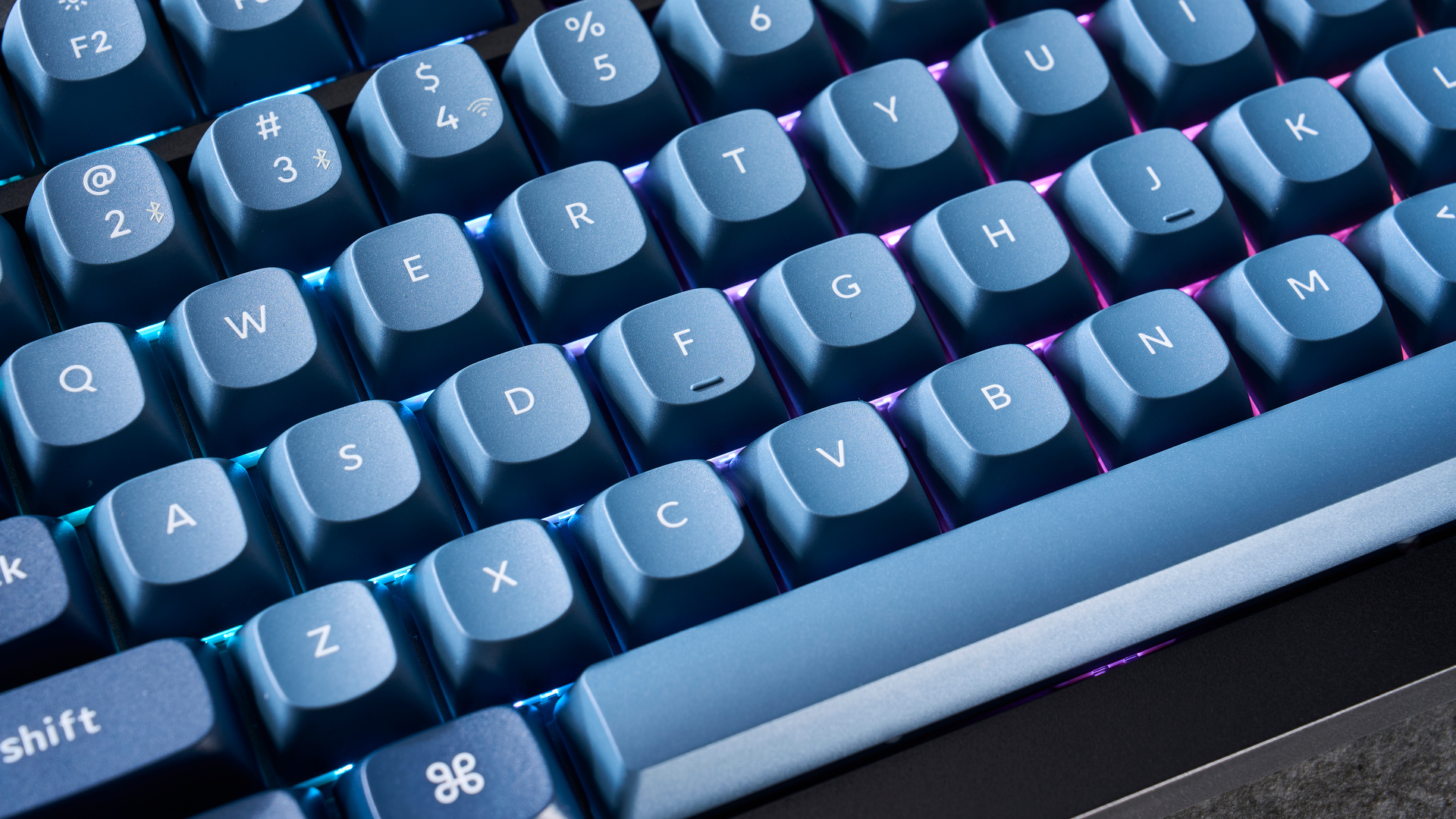
If the default keycaps aren’t to your taste, you can always swap them out (you can put the money you save on the board into a new set of caps). Alternatively, the sleek black visuals of the Cherry KW X ULP ($187) or Logitech G515 ($139) might be better suited to more austere office environments. If you’re after something a little more exciting, the poppier blue of the Ducky One3 TKL (£119) midnight colorway or the NuPhy Halo75 V2 ($149) might suit you better.
Typing
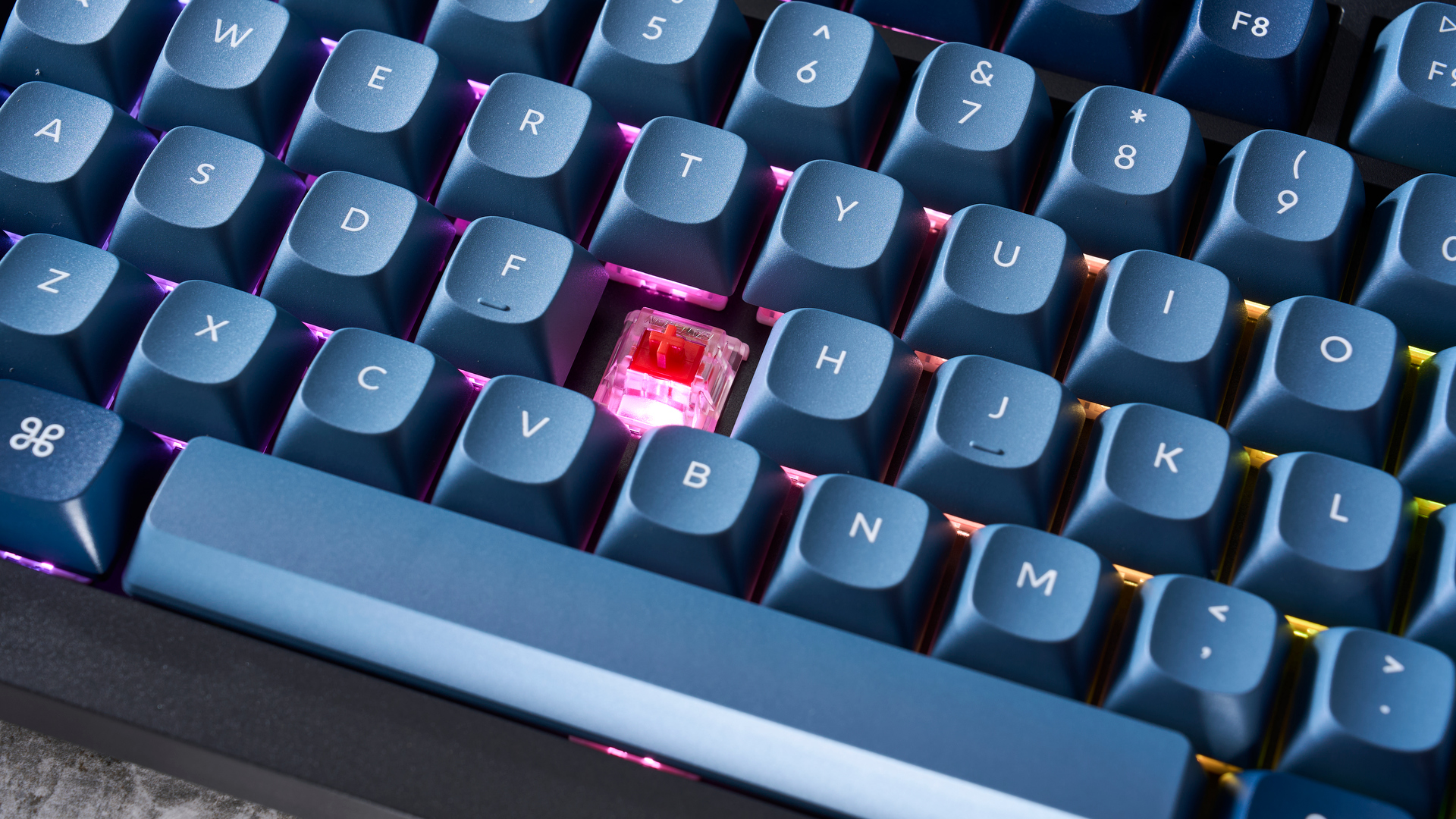
I blew away my previous top typing speed and accuracy with the V3 Max, which was the first standard-profile keyboard to challenge low-profile boards for rapid typing — keyboards like the Cherry KW X ULP generally allow me to type the fastest and most accurately due to the low profile switches and keycaps. On the V3 Max, the keys get narrower towards the top, reducing the surface area of each key. It’s only a little bigger than my fingertips, with a very round-edged and concave shape, greatly benefiting comfort and accuracy.
The V3 Max is available with Gateron Red (linear), Brown (tactile) or Banana (tactile) switches. I tested the Gateron Red linear switches, which have a pleasant bounceback to them that makes for a smooth type feel. They have an actuation force of 45g, for a subtle amount of resistance that makes the switches easy to actuate. They are nicely sprung for a soft bounceback that meant long writing sessions felt satisfying and were not tiring for my fingers — this is an excellent keyboard for typists.

The keyboard is also great for macOS users, particularly due to the built-in macOS Fn keys that allow for quick access to commonly used functions like App Exposé. Compared to other macOS-oriented keyboards I have used, the spacing and positioning of crucial keys, like the Cmd key, makes using shortcuts like copy or paste feel very natural. This is especially true when compared to other macOS-oriented productivity boards like the KSI-Wombat Willow Pro ($144) which I found much more frustrating. Windows users, do not fret, because replacement keys with Windows legends are also included.
Sound
A special mention goes out to the typing sound on the V3, which manages to be rich and satisfying while staying relatively quiet. Keychron has a reputation for producing excellent sounding keyboards, with standout examples like the Keychron V6 ($89) and Keychron Q3 Max ($214), and the V3 is no exception. Each press of a key lets out a mid to high-pitched tap which sounds great, and won’t garner much negative attention in an office environment.
Gaming Performance
This is not marketed as a gaming-focused keyboard, but I tested out the V3 in a few games — as someone who mostly games on PC, all my keyboards need to be game-ready. The responsive linear switches again worked well in-game, with rapid inputs feeling easy to perform.
The switches’ low 45g resistance and satisfying bounceback meant pulling off maneuvers in my favorite FPS games was very easy, my movements fluid. I found being able to hear the fairly loud taps of my keys helped with timing bunnyhops or strafes in Team Fortress 2 and Counter Strike, but for some this may be too much of a distraction. Meanwhile, a 1,000hz polling rate provides practically no noticeable latency in-game, even in more demanding competitive titles like Valorant.
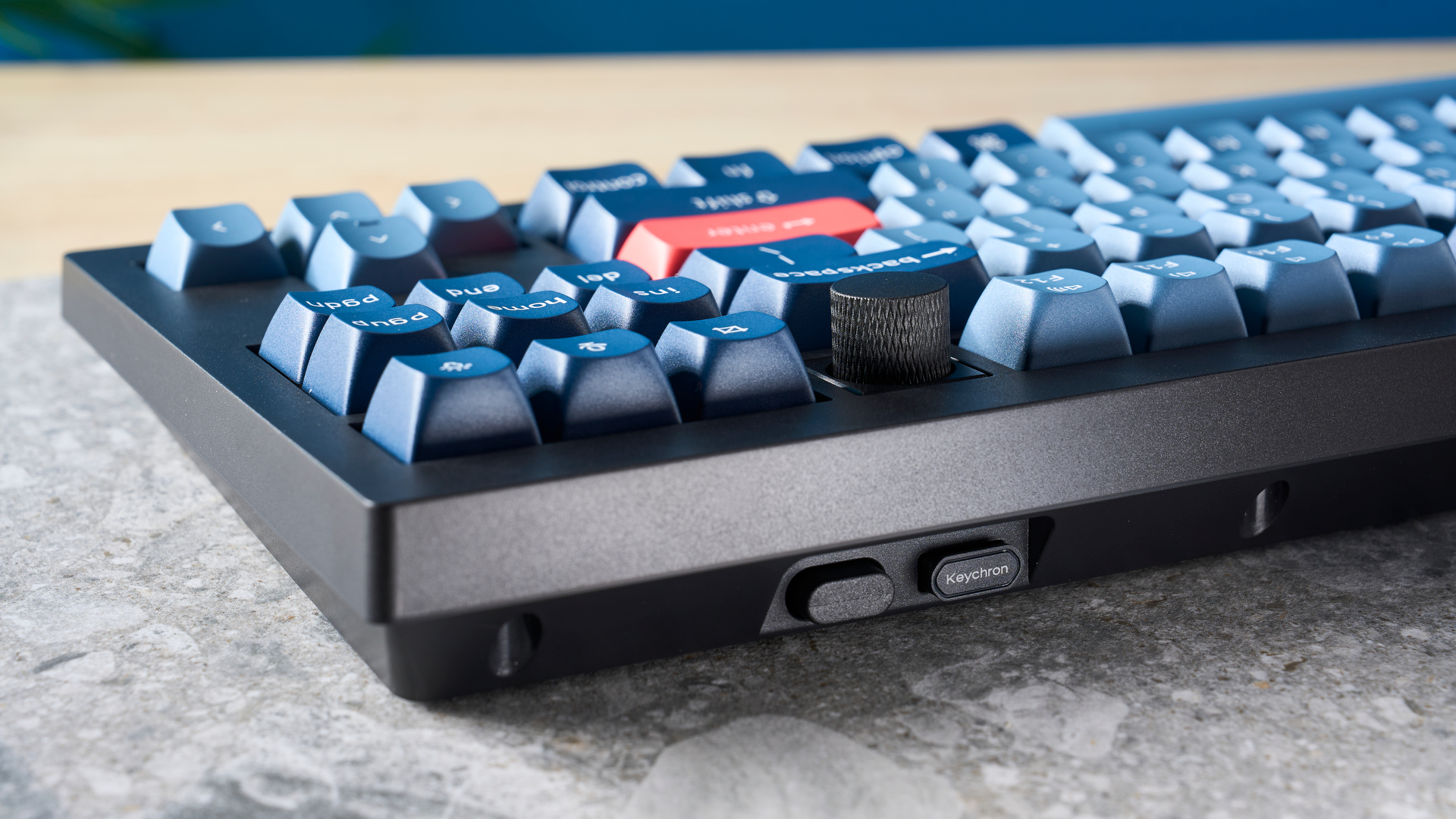
Some aspects of the board are not well suited for MMOs like Final Fantasy XIV or more complex Milsim titles, such as ARMA 3. I found that the placement of the function keys, which I use for some keybinds, was a little tricky to use, as the keycaps sit a little lower in profile than the number keys beneath them.
Connectivity
A minor feature, but I was a big fan of the ‘back panel’ of the keyboard: included with the V3 Max are both a USB-C and USB-A 2.4G dongle, so MacBook users can rejoice. The keyboard has robust magnetic storage for both of these, very convenient for taking the keyboard on the go.
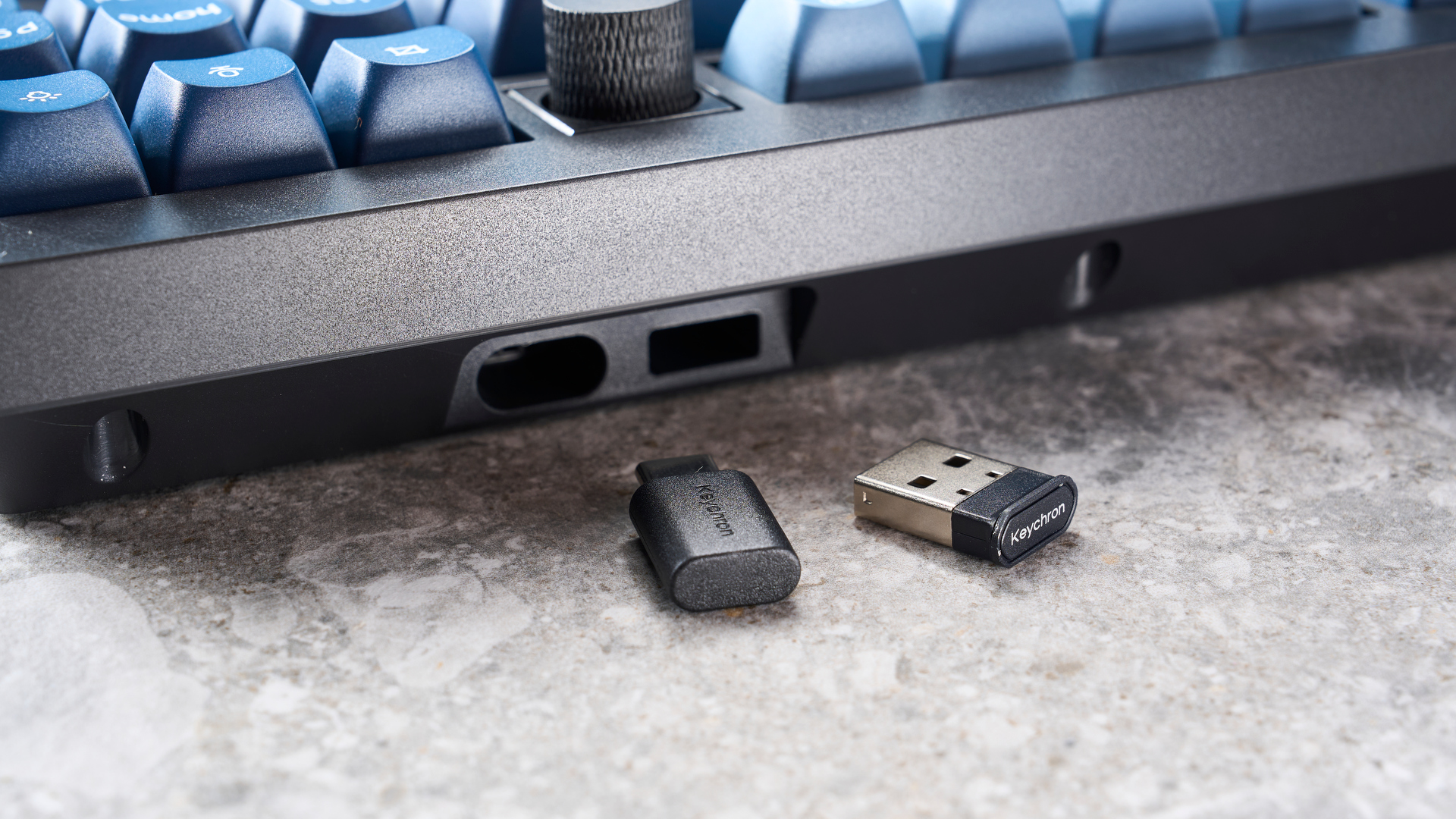
Thanks to its 4,000mAh battery, I could take the keyboard to and from the office for a couple of weeks without having to recharge. This is solid performance which rivals competitor keyboards like the NuPhy Halo75 V2 ($129), although the V3 Max is beaten in capacity by the Epomaker DynaTab75 ($89) with its beefy 5,000 mAh battery.
Companion Software
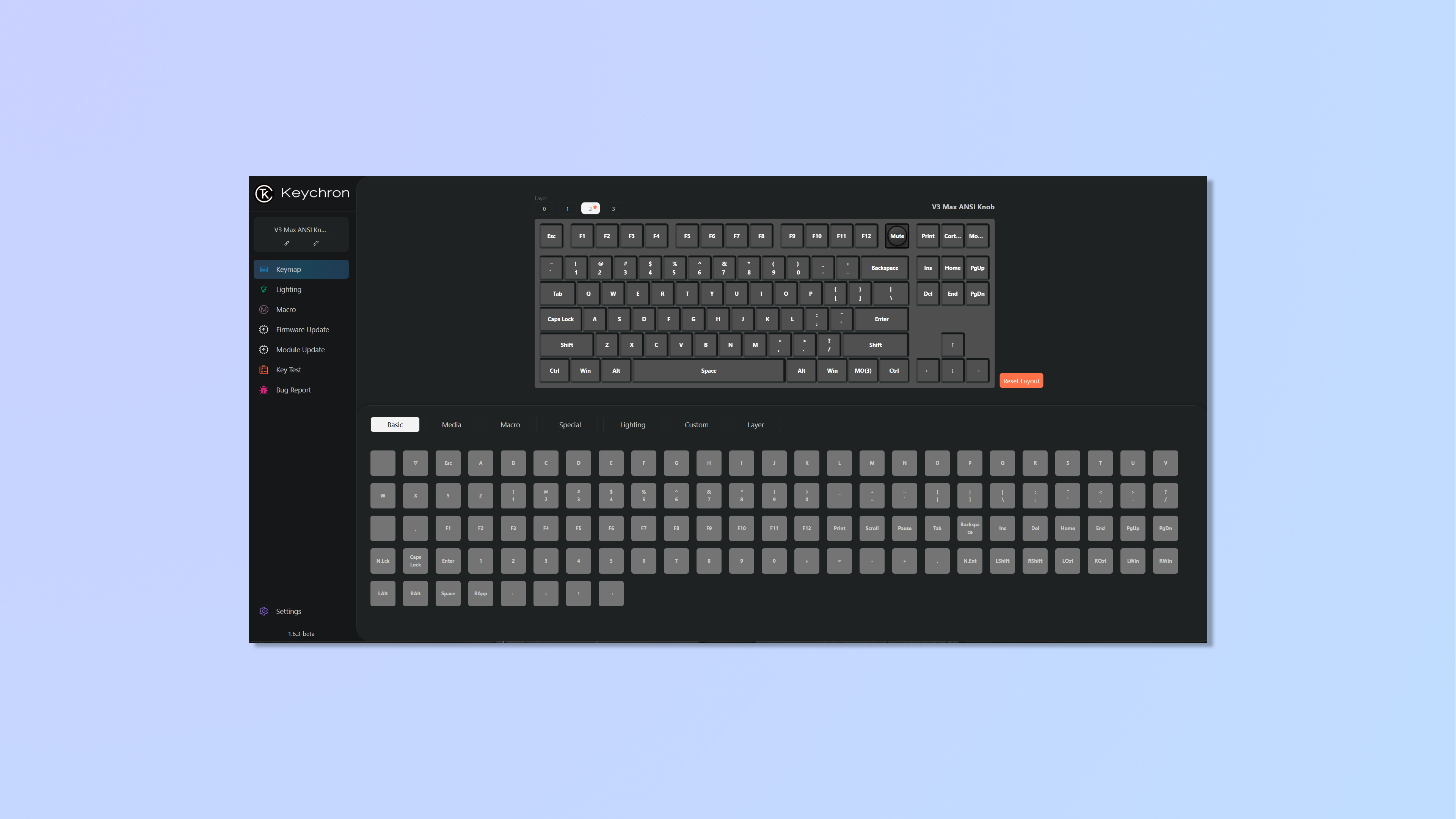
Like the rest of Keychron’s V range, the V3 Max runs on open source QMK firmware. This means easy reconfiguration of the keyboard via Keychron’s Launcher app. Conveniently running from within your browser, it allows you to fully customize your keyboard bindings, as well as program macros. The only real drawback with the app is the requirement to have a wired connection while using it — not the most convenient if you're looking for a quick rebind. Other manufacturers, like Logitech, allow for much more flexibility via a wireless connection to the G Hub software on boards like the G515 Lightspeed TKL ($139).
Price
The V3 Max costs $99, which is a highly competitive price given the performance, build and features. It’s also available as a wired-only model, the Keychron V3, which will save you around $10, while a no-knob version brings the total down to just $84. The differences in pricing are so minimal, though, that I’d just recommend opting for the full-fat V3 Max for the few extra bucks.
Keychron V3 Max review: The downs
The only criticisms I have with the V3 Max are minor in light of its low cost — this is a truly excellent keyboard. The main issue I have is with questionable PCB mounting and the placement of the volume knob.
Build issues
Sticking out like a sore thumb from the V3 Max’s otherwise flawless construction is an annoying problem with the PCB mounting. The mounting points are not positioned close enough to the corners of the board at the top, while the foam mounting gaskets are much softer than rubber gaskets used in rivals like the NuPhy Gem80 ($169). What’s more, the plastic plate used is also flexible. As such, pressing the volume knob down or any key in the upper corners of the board will depress the PCB and all of the surrounding keys, similar to the issue we saw on the budget Lemokey X3 ($49) (Lemokey is the same company as Keychron). We didn’t see this issue on other members of the V lineup, such as the V1 Max and V6, nor on the pricier Q3 Max ($214) which uses a similar TKL PCB.
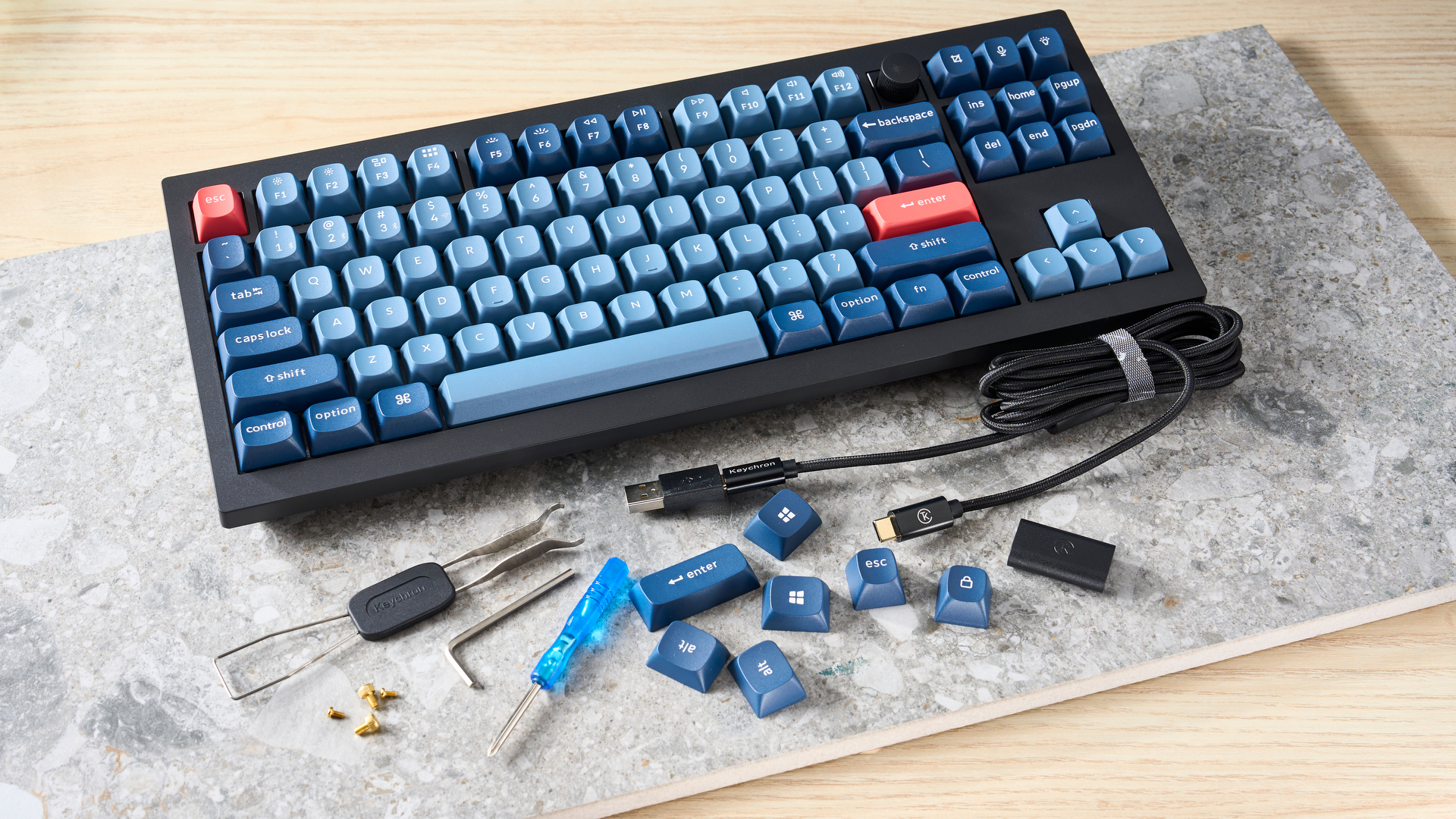
While this doesn’t affect most letter keys, and so won’t impact your typing experience, it’s disappointing to see from a manufacturer usually known for excellent build quality. It’s worth noting that the rest of the construction is faultless, with a high quality ABS case and double-shot PBT keycaps that keeps the board feeling otherwise substantial, along with solid screw-in stabilizers to prevent large key wobble.
Volume Knob
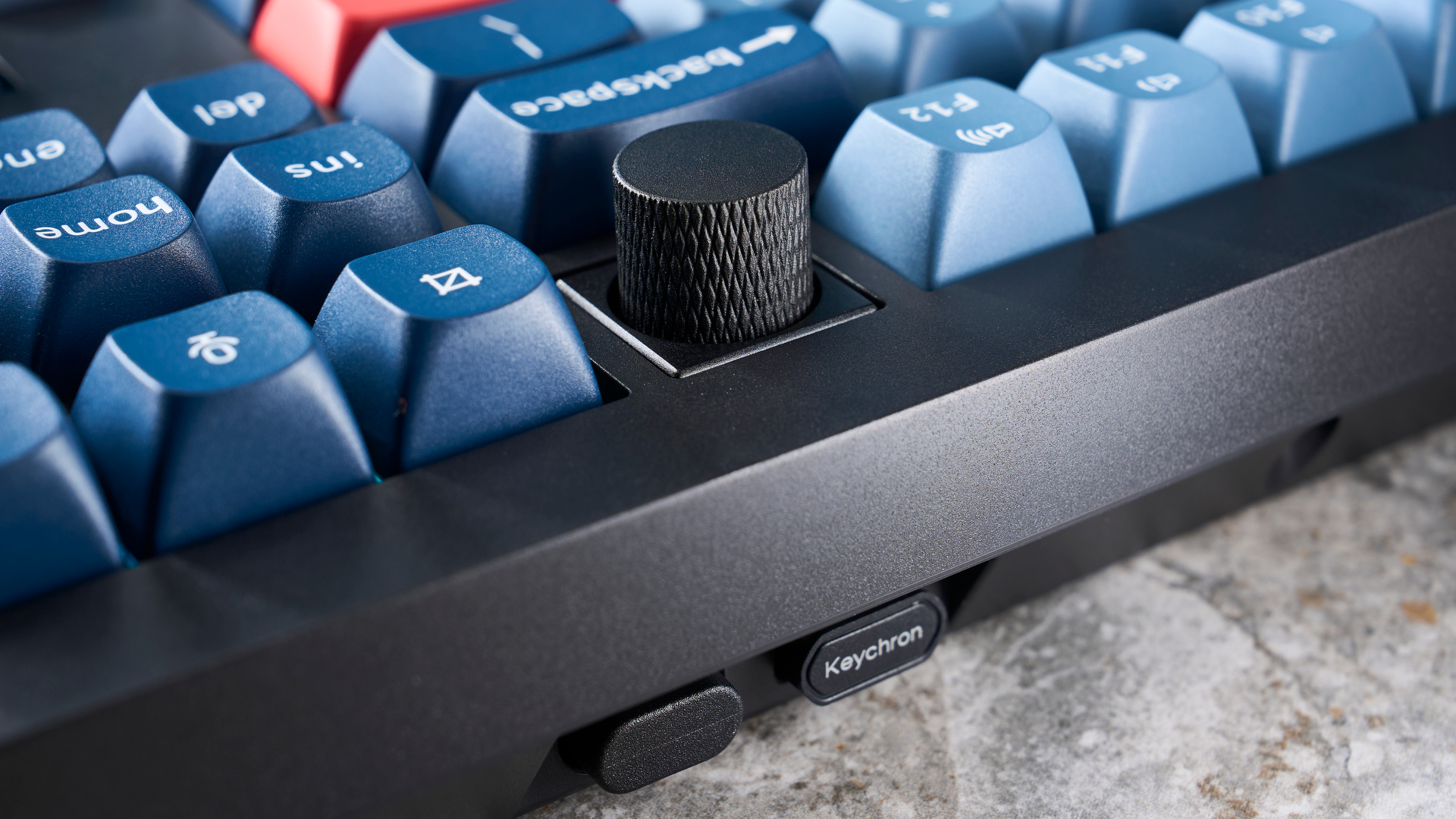
While the volume knob on the V1 was placed on the edge of the keyboard, allowing for easy access, the V3 Max’s knob is awkwardly placed between the function keys and the top row of navigation keys. I was able to adjust it at a slightly off angle from the top of the keyboard, although it was frustrating to have the most natural feeling approach (from the sides), blocked off by keys. Its placement also stops you from rotating the knob completely without repositioning your hand. It isn’t a deal breaker by any means, but feels ill thought out.
Keychron V3 Max review: Verdict
The Keychron V3 Max is an incredible TKL keyboard, and has earned its place as my new favorite work board. The V3 Max is an all-rounder that offers some of the best typing I have come across on a standard-profile mechanical keyboard. You will quickly fall in love with the feel of the keycaps and, if you’re anything like me, will hit faster and more accurate typing speeds.
If you can get past the weaker aspects of the build compared to other keyboards at this price point, the quality of typing you get for your money is certainly worth it. Whether you’re on macOS or Windows, the V3 is a beast for productivity, and the gaming performance shouldn’t be overlooked either. It is fair to say that I won’t be putting the V3 Max down anytime soon.







